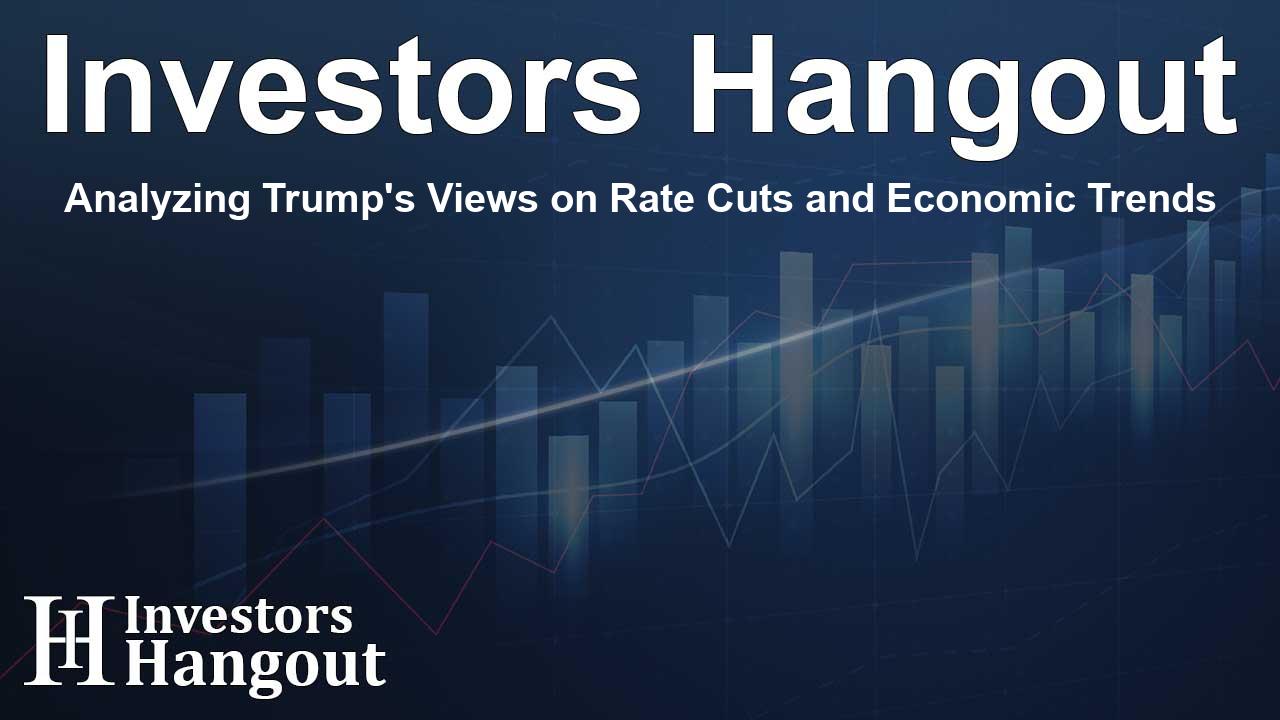Analyzing Trump's Views on Rate Cuts and Economic Trends

Understanding Trump's Perspective on Rate Cuts
Former President Trump has continually called on Federal Reserve Chairman Jerome Powell to implement interest rate cuts, an action he believes could stimulate economic growth. The discussions surrounding rate adjustments seem to gain momentum, particularly as the economic landscape reveals inconsistencies. The Federal Reserve's decision to pause rate cuts once Trump assumed office raised eyebrows, with many interpreting it as potentially politically motivated.
In the wake of inflationary concerns stemming from tariff policies, many wonder if Trump's calls for lower rates have merit given the current economic indicators. The Fed's cautious approach, particularly after the inflation rise seen in 2020-2021, indicates they are committed to avoiding previous mistakes.
The Economic Landscape Compared to Previous Rates
To truly assess the implications of potential rate cuts, it’s crucial to compare the current environment to the time when the Fed last cut rates in late 2024. The three mandates of the Federal Reserve, including maximum employment, stable prices, and moderate long-term interest rates, provide a good framework for analysis.
Maximum Employment: A Decreasing Trend
Current payroll growth has significantly slowed, with averages touting just 35,000 new jobs monthly compared to 209,000 seen last December. Additionally, personal income growth has dropped from an impressive 5.9% annual rate last year to a meager 2.7% today. Job openings have also decreased notably from 7,718 to 7,514 over the same period, indicating that the labor market is facing notable challenges.
Stable Prices and Inflation Rates
In terms of stable prices, previous measures showed the 3-month Consumer Price Index (CPI) trend was at 2.87% last December, while today it's significantly lower, resting at 1.70%. An interesting note is that the latest annualized monthly reading indicates inflation is around 1.2% lower than during the same timeframe last year. This shift reflects the Fed's struggle with accurate inflation predictions and the ramifications those errors have caused across the economy.
Real Interest Rates Over Time
Looking at long-term rates, real rates have fluctuated between 1.5% and 2.0% in recent years – a significant increase compared to pre-COVID levels, which hovered around 0% to 1%. This is vital as the economic growth rate has averaged 1.25% in the first half of recent reporting periods, far below the previous 2.60% growth rate in the latter half of 2024.
Labor Market Weakness: A Systematic Concern
The recent BLS employment report revealed a growth of just 73,000 jobs, surprising many analysts given predictions. Further revisions show that even the previously reported numbers for June were drastically altered – from 147,000 down to 14,000. The messaging is clear: the U.S. labor market is exhibiting significant slowing trends, and this isn't merely a seasonal fluctuation. Trends suggest a prolonged struggle that goes beyond mere figures.
Upcoming Economic Indicators and Fed Insights
With many companies reporting earnings and taking a breather in big data releases, the focus will shift significantly to the Federal Reserve’s upcoming discussions. The service sector will release critical economic data, and the latest reports indicate that ISM Manufacturing is still in a recessionary hold. This supports the idea that Fed officials may lean towards considering rate cuts as they analyze current employment figures in conjunction with the economic slowdown.
Conclusions: Awaiting Fed's Response
The evidence suggests that Trump’s calls for a rate cut may hold some truth when considering the current state of the labor market, inflation rates, and economic growth trends. However, it will require patience as the Fed weighs these issues before making substantial adjustments. Their interpretation of tariffs and their effects on pricing and the economy will be a deciding factor in future decisions.
Frequently Asked Questions
What specific points does Trump make regarding rate cuts?
Trump argues that lower rates could lead to economic stimulation, especially in light of current employment trends.
How has the labor market changed recently?
The labor market shows significant slowing, with job growth plunging notably and revised employment numbers indicating a more severe drop than previously calculated.
What are the three mandates of the Federal Reserve?
The three mandates include fostering maximum employment, maintaining stable prices, and ensuring moderate long-term interest rates.
How does inflation impact decisions on rate cuts?
High inflation rates generally discourage rate cuts, but if inflation stabilizes or decreases, the Fed may reconsider its stance on rates.
When can we expect the Fed to announce decisions on rates?
The Fed's decisions typically follow their meetings when they review economic data and assess trends, so updates may come shortly after key economic indicators are released.
About The Author
Contact Addison Perry privately here. Or send an email with ATTN: Addison Perry as the subject to contact@investorshangout.com.
About Investors Hangout
Investors Hangout is a leading online stock forum for financial discussion and learning, offering a wide range of free tools and resources. It draws in traders of all levels, who exchange market knowledge, investigate trading tactics, and keep an eye on industry developments in real time. Featuring financial articles, stock message boards, quotes, charts, company profiles, and live news updates. Through cooperative learning and a wealth of informational resources, it helps users from novices creating their first portfolios to experts honing their techniques. Join Investors Hangout today: https://investorshangout.com/
The content of this article is based on factual, publicly available information and does not represent legal, financial, or investment advice. Investors Hangout does not offer financial advice, and the author is not a licensed financial advisor. Consult a qualified advisor before making any financial or investment decisions based on this article. This article should not be considered advice to purchase, sell, or hold any securities or other investments. If any of the material provided here is inaccurate, please contact us for corrections.
